From Antigua to Corfu, where the eggs are red and the fireworks aren’t just for New Year’s.

Introduction
For those of us who see the world through the lens of shared meals, folklore, and local secrets, Easter offers one of the most vivid and emotionally resonant windows into regional identity. This isn’t just chocolate bunnies and pastel eggs. From fire-filled processions to Orthodox candlelight vigils, Easter in many cultures represents a fusion of sacred memory, seasonal renewal, and culinary ritual.
Our team of travel experts and enthusiasts at Cerca has witnessed Holy Week processions on cobblestone colonial streets, watched the Pope address St. Peter’s Square, shared lamb feasts in highland villages, and watched palm branches transform into art. These are seven of our favorite places to experience truly unique Easter traditions—steeped in history, anchored in community, and often paired with unforgettable cuisine.
Each location includes tips for responsible travel and local expert recommendations to keep your journey regenerative, not extractive.
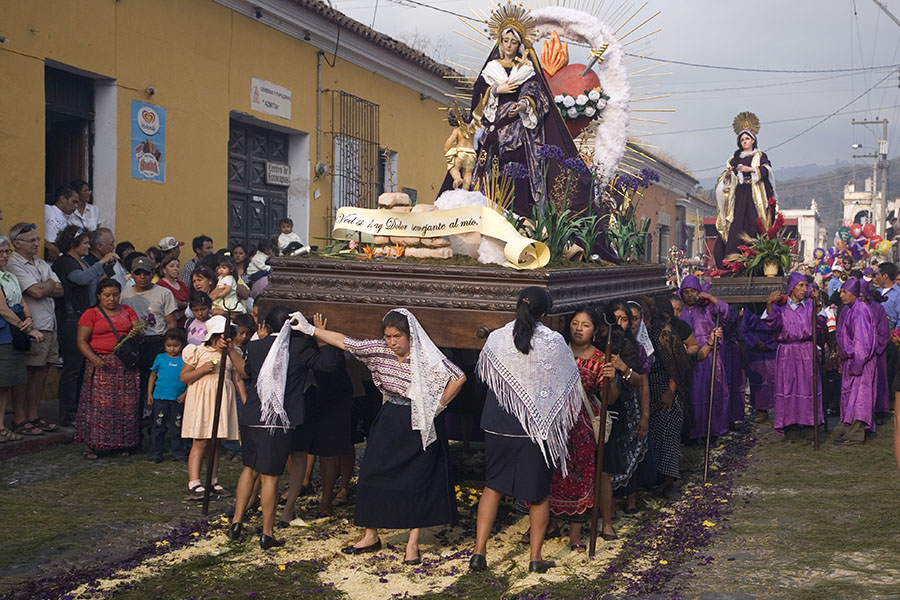
1. Antigua, Guatemala
The World’s Most Stunning Easter Processions
Antigua’s Holy Week, or Semana Santa, is a dazzling blend of Spanish Catholicism and Indigenous Mayan symbolism. For over four centuries, this UNESCO-listed city has staged intricately choreographed processions where massive wooden floats (andas) are carried by costaleros through streets lined with colorful carpets (alfombras) made of dyed sawdust, pine needles, and flowers. The visual intensity is matched by the deep community participation. Each float weighs hundreds of pounds and may take 50 people to carry—many doing so barefoot as a sign of penance.
History: The origins date back to the 16th century when Spanish missionaries introduced Catholic rites. Over time, Indigenous artistry transformed these rituals into a uniquely Guatemalan expression of faith, resistance, and beauty. The alfombras alone require weeks of planning and are destroyed within minutes as the processions pass—a moving metaphor for sacrifice and impermanence.
Where to Eat:
El Rincón Tipico: A traditional, family-friendly, hidden-gem status join serving only traditional Guatemalan dishes.
La Casa de Don David: A casual, truly authentic spot in the outskirts serving local specialties like Pepián stew, a pre-Hispanic dish still eaten at Easter. Only one dish is prepared (plus a vegetarian option) each night, so you’ll have to check in for a reservation by 4pm to reserve a spot.
Responsible Travel: Stay in eco-conscious accommodations such as Earth Lodge, a mountain avocado farm that supports local employment and reforestation.

2. Corfu, Greece
Red Eggs, Smashing Pots, and Midnight Fireworks
Corfu’s Easter celebration is a vibrant collision of Orthodox mysticism, local pageantry, and ancient Greek spring rituals. The highlight is Holy Saturday, when residents toss massive clay pots from balconies—a symbol of renewal, breaking with the old to welcome the new.
History: Orthodox Easter is the most significant holiday in Greece, and Corfu’s tradition dates back to Venetian rule (14th-18th centuries). The pot smashing may have pagan roots linked to Dionysian fertility rites. Red eggs symbolize Christ’s blood and rebirth. The midnight Resurrection service erupts with chants, fireworks, and candlelight.
Where to Eat:
Etrusco: A two-star Michelin destination by Ettore Botrini, famous for its Ionian reinterpretation of Greek classics.
Taverna Elisabeth: Family run for generations in the small village of Doukades, call ahead to ensure they’ll have your clay pot lamb.
Responsible Travel Tip: Corfu has a growing movement of agro-tourism farms. Try a stay at Ambelonas Corfu, which promotes organic foodways and heritage wine.
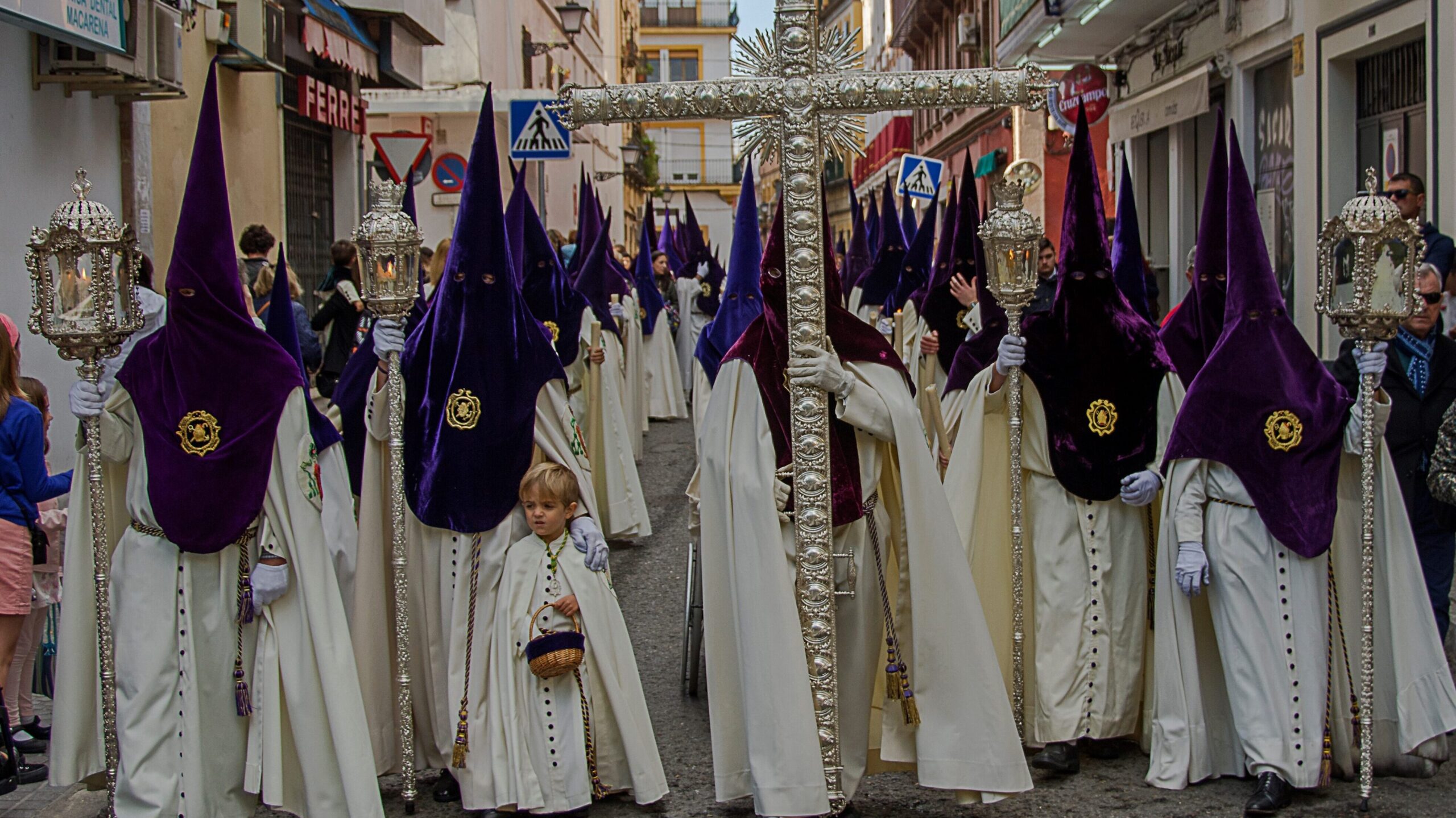
3. Seville, Spain
The Passion in Flamenco Tempo
La Semana Santa de Sevilla is dramatic, baroque, and deeply theatrical. Each night from Palm Sunday to Easter, penitents in traditional robes and hoods (called nazarenos) walk silently through the streets accompanied by pasos (sculptural floats) of the Virgin Mary and Christ, often set to live flamenco-style lamentations. Now, a word of warning, the hoods worn by the Nazarenos look remarkably similar to those worn by members of the K.K.K. – there is no connection, but it does take you aback when you see it!
History: The tradition stems from the Counter-Reformation era (16th century), where elaborate processions were designed to inspire devotion. Seville’s brotherhoods (cofradías) each maintain their own unique rituals and sculptures, passed down through centuries.
Where to Eat:
Abantal: Seville’s Michelin-starred pride, known for modern Andalusian cuisine.
La Azotea: Not fancy, but the tapas are next-level. Try the Easter-only torrijas (Spanish-style French toast soaked in wine and honey).
Responsible Travel Tip: Avoid booking balconies for parade viewing from short-term rentals. Instead, view from public spaces and support ethical cofradía-run viewing spots that give back to the community.
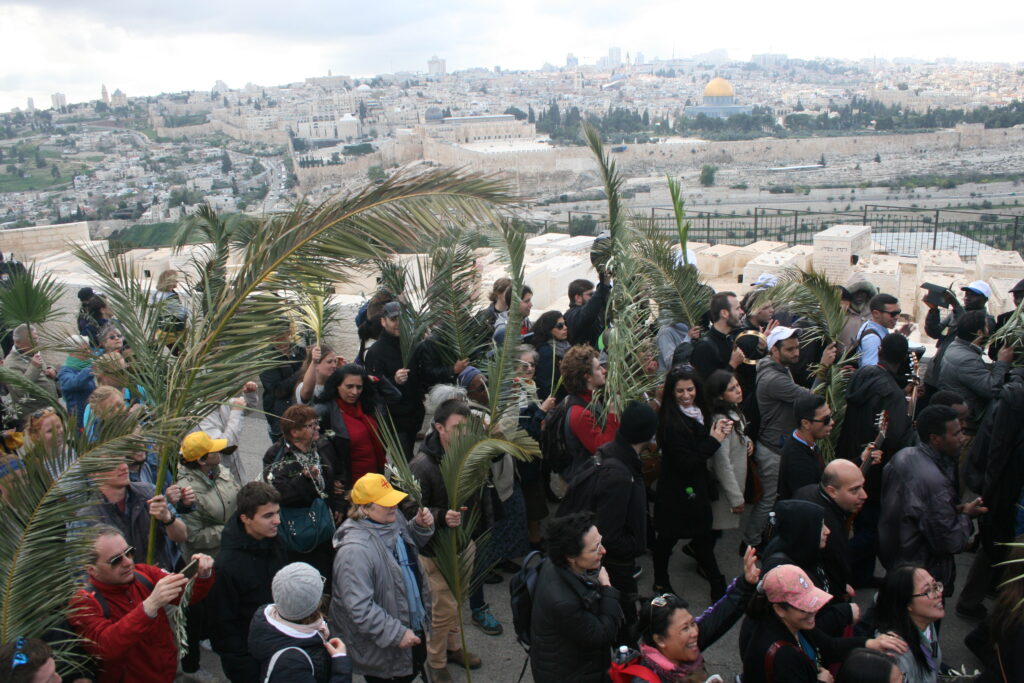
4. Jerusalem, Israel
Walk the Path of History
Easter in Jerusalem is as intimate as it is monumental. Pilgrims follow the Via Dolorosa, the route Jesus is believed to have walked on the way to crucifixion. On Good Friday, a multi-denominational procession retraces the 14 Stations of the Cross. The Holy Fire ceremony at the Church of the Holy Sepulchre on Holy Saturday is one of Christianity’s oldest surviving rituals.
History: Jerusalem has been the nexus of Abrahamic faiths for millennia. Easter rituals here span Armenian, Greek Orthodox, Roman Catholic, and Coptic traditions. The Holy Fire, in particular, dates to at least the 9th century and is believed by the faithful to be a miraculous flame that appears each year.
Where to Eat:
Machneyuda: Inventive Jerusalem cuisine, best booked well in advance.
Tala Hummus and Falafel: Modest and divine, right by Jaffa Gate. Don’t miss the pickled eggplant.
Listen:
To Cerca‘s podcast series Passport: episode on Jerusalem.
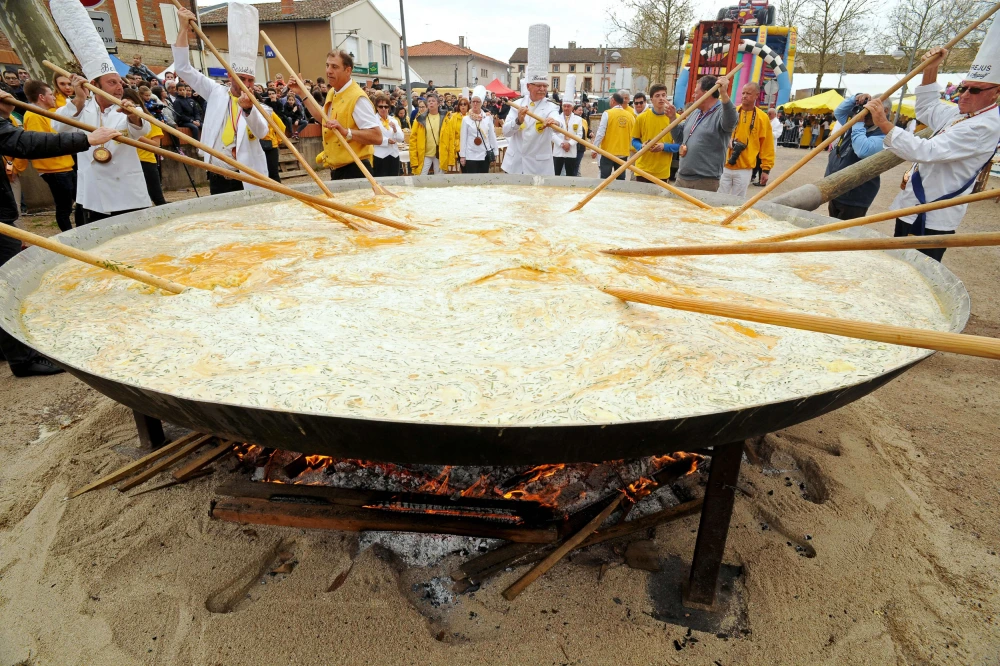
5. Haux, France
A Giant Omelette for 1,000 People
On Easter Monday, the small Gascon town of Haux (pronounced “Oh”) stirs together more than 5,000 eggs to make one enormous omelette in the town square. It’s a joyful celebration rooted in post-Lenten indulgence and rural community spirit. The massive omelette contains over 100 pounds each of bacon, garlic and onions. Yes, there is bread to go with it.
History: Legend has it that Napoleon, upon passing through the area, asked for an omelette so good that he ordered a giant version for his troops. Haux took the tale and ran with it. Since 1973, the Confrérie de l’Omelette Géante has made it a formal event, symbolizing unity and abundance.
Where to Eat:
Le Saint-James: In nearby Bouliac, 1 Michelin star. You can stay here as well in equally luxuriously furnished rooms overlooking a pastoral country setting.
Responsible Travel: The town partners with local farms to source the eggs. Support them by purchasing direct from the local market.
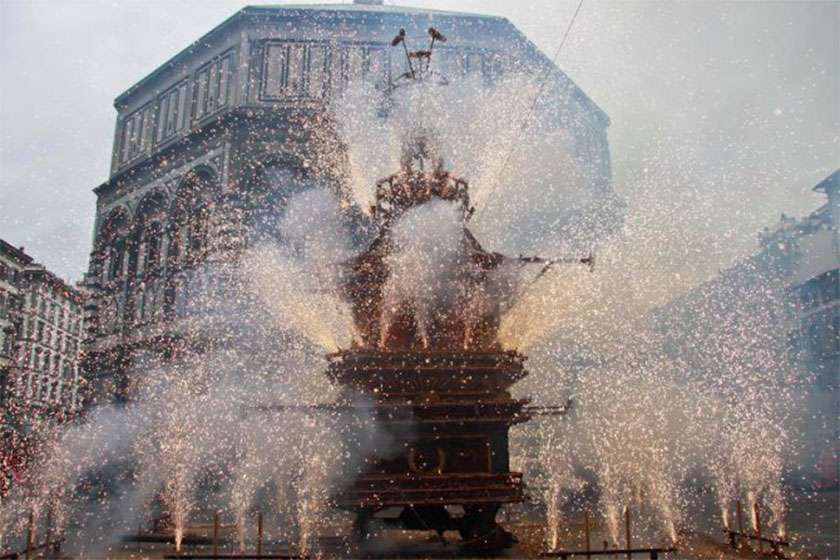
6. Florence, Italy
The Explosion of the Cart
The Scoppio del Carro (Explosion of the Cart) is a fireworks-filled Easter morning ritual dating back nearly 1,000 years. A massive cart is wheeled through Florence to the front of the Duomo. There, a mechanical dove (symbol of the Holy Spirit) lights a fuse and ignites fireworks on the cart, signifying peace and prosperity.
History: This event is thought to originate from the First Crusade, when a Florentine knight brought back flints from the Church of the Holy Sepulchre. The flints became relics, and the ritual was born to share the light of resurrection.
Where to Eat:
Ora d’Aria: A Michelin-recommended Florence classic steps from the Ponte Vecchio.
Responsible Travel: Avoid adding to the already intense Easter weekend crowds. Consider watching the cart procession from Oltrarno and support artisans and food vendors there.

7. Bermuda
Kites, Codfish, and Colonial Echoes
Good Friday in Bermuda is less about pageantry and more about skies filled with handcrafted kites. Locals gather on beaches to fly intricate hexagonal designs made of wooden sticks and colored tissue. Easter Sunday meals traditionally include codfish cakes with banana and hot cross buns. Bermuda is also famous for cultivating the beautiful white Easter lily.
History: The kite tradition is said to have originated with a local teacher trying to explain Christ’s ascension. Over time, it grew into an island-wide art form. The food traditions reflect a mix of British colonial legacy and Afro-Caribbean flavors.
Where to Eat:
The Waterlot: A historic location, which has welcome visitors since 1670, it now serves an upscale surf & turf menu including scallops, wagyu and lamb with add ons like lobster and froix gras.
Art Mel’s Spicy Dicy: Off the beaten path. Try the fish sandwich, ranked among the best in the world.
Responsible Travel Tip: Fly a kite made by a local artisan. Avoid plastic string and mass-produced kites.ç
Easter is one of the richest times to travel, not just for those who observe it religiously, but for anyone curious about how tradition, seasonality, and identity intertwine across cultures. From solemn parades in Jerusalem to celebratory fireworks in Florence, each of these destinations offers a sensory deep-dive into history, faith, food, and place.
As always, travel thoughtfully: stay local, eat regional, and support those who preserve these cultural legacies. Wherever you go, may your Easter be as colorful as a Corfiot pot and as nourishing as a Gascon omelette.
Happy travels from the team at Cerca!